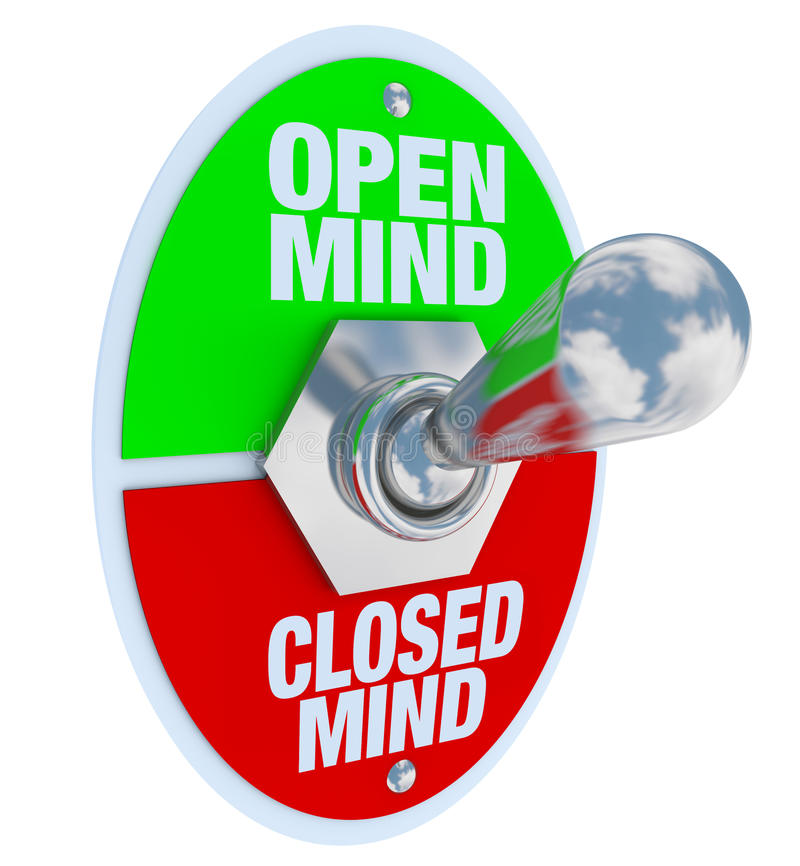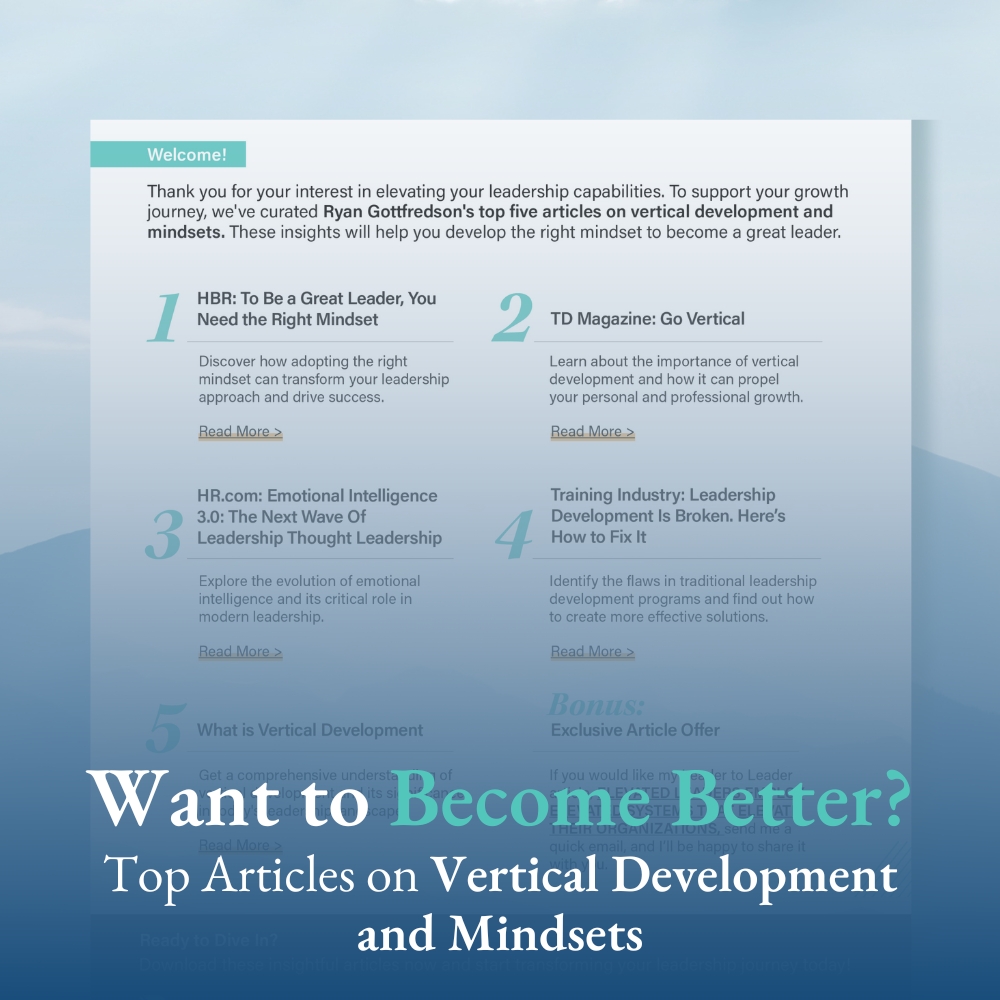If you feel like a mindset novice, before reading this article, you might find value in reading these two articles:
- What are Mindsets & Why are They Foundational to Our Success?
- Research-Backed Benefits of Possessing an Open Mindset
These articles lay the groundwork for why we need to focus on developing more of an open mindset.
Closed and Open Mindsets
We possess an open mindset when we are open to the ideas and suggestions of others, and we are willing to take them seriously.

We possess a closed mindset when we are closed to the ideas and suggestions of others.
We possess a closed mindset when we think that we know best, or at least we think we have enough information. In these two instances, our focus becomes on being right. As a consequence, we want to be the one with the answers (and don’t ask questions), we avoid new perspectives and feedback, and we see disagreement or different ideas as threats and get defensive.
It is not uncommon to see these elements when there are discussions of religion or politics. The conflict that commonly arises during such conversations is rooted in having a closed mindset.
We need to remembers, that we can always take a stand. We can always have a stiff back. But, having an open mindset simultaneously means that we also have a soft front. We are able to at least take in the ideas of others and weigh their merits.
We possess an open mindset when we believe that we can be wrong. When we believe that we can be wrong, we don’t care about being seen as right. Instead, we care about finding truth and thinking optimally. Thus, we ask questions, seek to understand, seek feedback, invite new perspectives, and see disagreement or different ideas as opportunities to learn.
Having an open mindset, not only helps us to become more of someone others want to work and collaborate with, but it actually fuels an element that is necessary for top team performance: psychological safety.

Developing More of an Open Mindset
To understand how to develop more of an open mindset, we must understand what exactly mindsets are. They are neural networks in our prefrontal cortex.

You see, our senses (e.g., sight, taste, sound) send their signals to our prefrontal cortex. Because our senses send more information to our prefrontal cortex than we can effectively process, we rely upon our mindsets, or specific neural networks, to filter out information that our mindsets deem to be most important. The information that our mindsets absorb is then interpreted in ways unique to our mindsets (e.g., different ideas are a threat vs. different ideas are an opportunity to see more optimally). Once the select cues are interpreted, it activates different elements of who we are (e.g., personality, goals, self-regulation) for further processing and action.
This means that when we talk about developing more of an open mindset, we are actually talking about strengthening the neural connection in our prefrontal cortex associated with an open mindset.
Strengthening our open mindset neural connection
Our neural connections in our prefrontal cortex are not too different from muscles. The more they get exercised, the stronger they become. And, the stronger they are, the more we rely upon them when filtering information.
So, if we can exercise and strengthen our open mindset neural connections, we will rely upon them more when filtering the information our senses absorb.
But, just as going to the gym once doesn’t make one strong, exercising our neural connections intermittently will not lead to us consistently relying upon our positive mindset neural connections. If we want long-term improvements in our mindsets, we have to intentionally and consistently work out our more positive mindset neural connections.
We should expect that as we strengthen our open mindset neural connection that we will naturally see alternative perspectives more and more as opportunities to come close to the truth and less and less as things that might be a threat to our worldview.
Exercises for our open mindset neural connection
Global Exercises
Swimming is one exercise that strengthens a number of different muscle groups in our body.
Similarly, meditation is an exercise that strengthens our different positive mindset neural connections.
Meditation, over time, improves our (1) cognitive flexibility to move away from our more dominant negative mindset neural connections, and (2) cognitive capacity to explore relying more upon our less dominant positive mindset neural connections.
If you are a meditation novice, I think the best tool to get you started is the Headspace app, which comes with a great free introductory series.
Specific Exercises
The following are various examples of specific exercises that have been proven to improve our mindsets:
- Learn more about open mindsets
- Read Principles by Ray Dalio
- Read Creativity, Inc. by Ed Catmull
- Read The Bottom of the Pool: Thinking Beyond Your Boundaries to Achieve Extraordinary Results by Andy Andrews
- Read these articles:
- Do You Have a Closed or an Open Mindset?
- Unlocking Greater Success by Developing an Open Mindset
- Becoming a More Positive Influence: Be Intellectually Humble
- Do You Think That Your Thinking is the Best Way to Think?
- The Difference Between Open-Minded and Close-Minded People
- The Power of Intellectual Humility
- Watch videos that promote an open mindset
- Improve your self-talk
- Ask yourself: “How full is my bucket?”
- Ask yourself: “Is it better to think optimally/seek truth or be right?”
- Take this quick assessment:
- Journal
- Write about a time when you learned and benefited from taking in an alternative perspective
- Write about how you want to respond the next time you receive constructive criticism
- Talk to others about open mindsets
- Questions to ask or answer:
- It is common for us to shut down the ideas of others?
- When are the times that we shut down the ideas of others?
- How psychologically safe is our environment?
- Do you feel like your opinions count?
- How can we help your opinions count more?
- Questions to ask or answer:
The more you regularly engage in these activities, the more you will exercise and strengthen your open mindset neural connection, and improve your ability to see, interpret, and respond to your world in more successful ways.










